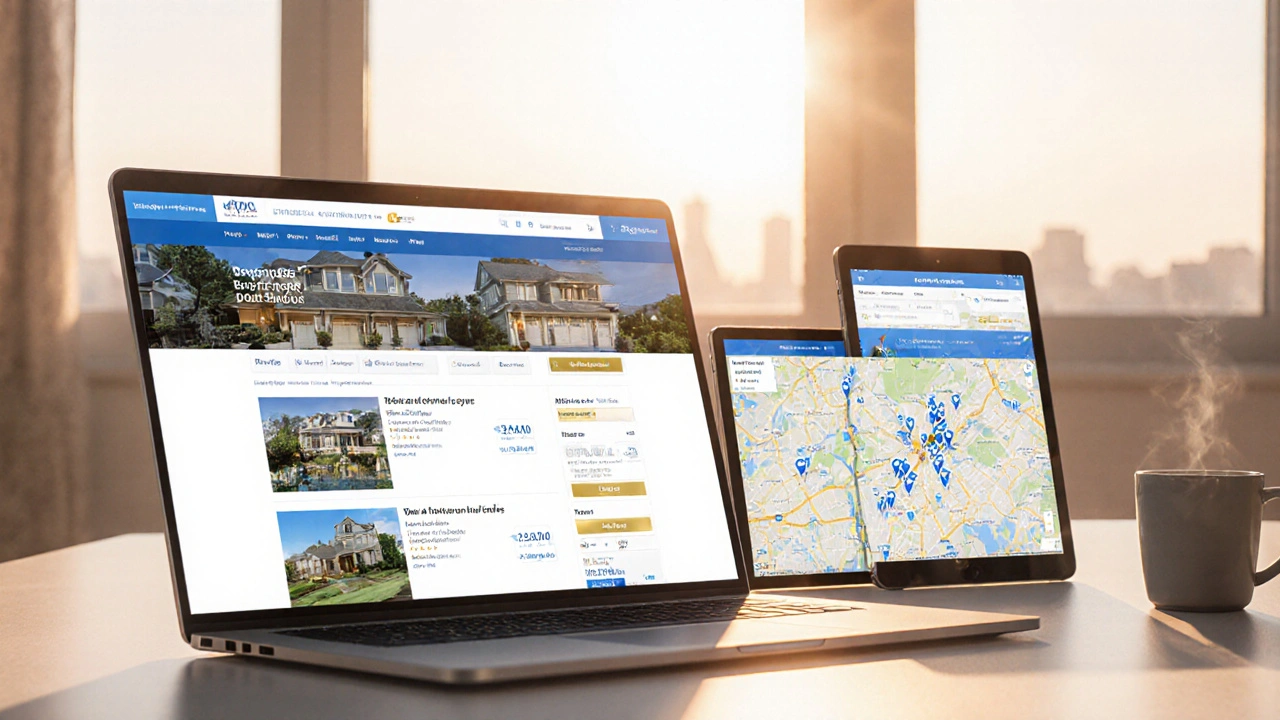Real Estate Website Platform Selector
Recommended Platform
Key Features for Your Selection
When you hear the term real estate website is an online platform that showcases property listings, enables search, and connects buyers with agents, you instantly picture a sleek portal where users can filter homes, view photos, and request tours. In 2025, a successful site needs more than pretty pictures; it must sync with MLS data, rank high in search engines, and turn visitors into qualified leads.
Quick Take
- Pick a tech stack that supports IDX and scales with traffic.
- Integrate IDX integration to pull live MLS data.
- Apply real‑estate‑specific SEO: local keywords, schema markup, and fast load times.
- Use lead capture forms linked to a CRM for instant follow‑up.
- Test on mobile, refine UX, and keep content fresh.
1. Core Components of a Real Estate Website
A modern property listings page does more than list homes. It offers:
- Advanced search filters (price, beds, baths, neighborhood).
- Map view powered by Google Maps.
- High‑resolution photo galleries and virtual tours.
- Dynamic “schedule a showing” forms.
Behind the scenes, three engines keep everything humming:
- IDX integration: pulls up‑to‑date MLS data.
- Content Management System (CMS): lets you edit pages without code.
- Customer Relationship Management (CRM): stores leads and automates follow‑up.
2. Choosing the Right Platform and Tech Stack
Three primary approaches dominate the market:
| Criteria | WordPress+IDX Plugin | Custom‑Built (Framework) | SaaS (e.g., Squarespace Real Estate) |
|---|---|---|---|
| Initial Cost | Low to moderate (hosting+plugin fees) | High (development & testing) | Subscription‑based (monthly) |
| Flexibility | High (thousands of plugins) | Full control of UI/UX | Limited to template features |
| IDX Support | Native via popular plugins (iHomefinder, IDX Broker) | Custom API integration required | Often built‑in but less granular |
| Scalability | Depends on hosting plan | Can be architected for high traffic | Managed by provider |
| SEO Control | Full control via plugins (Yoast, Rank Math) | Custom schema and server‑side rendering | Basic SEO tools only |
If you’re a small brokerage with limited budget, WordPress paired with a reputable IDX plugin offers the best cost‑to‑value ratio. Larger agencies that need bespoke branding or high traffic handling often go custom, using frameworks like React or Laravel. SaaS solutions suit agents who want a hands‑off experience-just pick a template and publish.
3. Getting IDX and MLS Data Right
IDX (Internet Data Exchange) is the bridge between your site and the Multiple Listing Service. Without it, your listings become stale. Here’s how to make it work:
- Choose an IDX provider that supports your local MLS (e.g., iHomefinder, IDX Broker, or MLS‑specific feeds).
- Sign the data‑sharing agreement; most providers require a monthly fee based on listing volume.
- Install the IDX plugin or embed the API endpoints. Make sure the plugin respects MLS rules for branding and attribution.
- Map IDX fields to your CMS custom post types so listings appear as native posts.
- Set up caching (Redis or Varnish) to keep page loads under 2 seconds even with thousands of listings.
Testing is critical: verify that new listings appear within 15 minutes of MLS update and that expired listings disappear promptly.

4. SEO & User Experience for Real Estate
Search engines love fresh, well‑structured content. Real estate sites have a unique advantage: each property can be a separate page with its own schema markup (type=Residence). Implement these steps:
- Write unique, keyword‑rich titles: "3‑Bed Condo in Downtown Austin - $350k".
- Include local schema (address, geo‑coordinates) for every listing.
- Optimize images: WebP format, lazy‑load, and descriptive alt text.
- Enable HTTPS with an SSL certificate; Google flags non‑secure sites.
- Build internal linking: "Similar homes in Brooklyn" cards that pass link juice.
- Create a blog with market reports, buying guides, and neighborhood spotlights-these attract long‑tail traffic.
Responsive design is non‑negotiable. Over 70% of home searches start on mobile. Use a mobile‑first layout that shrinks the filter bar into a slide‑out drawer and keeps tap targets at least 48px.
5. Lead Capture and CRM Integration
Every visitor who clicks “Schedule a Tour” is a potential client. Capture them using simple yet powerful forms:
- Ask for name, email, phone, and a single qualifying question (budget, timeframe).
- Use progressive profiling - ask more details after the first submission.
- Connect the form to a CRM like HubSpot, Zoho, or a real‑estate‑specific system such as kvCORE.
- Set up automated email drips: instant confirmation, property suggestions, and a follow‑up call reminder.
- Track source UTM parameters to know which channel (organic, paid, referral) generated the lead.
For agencies that prefer all‑in‑one, many IDX providers bundle lead management dashboards, but a dedicated CRM gives richer analytics and better integration with phone‑dialer tools.
6. Launch, Test, and Ongoing Maintenance
Before you go live, run a checklist:
- Validate schema markup using Google’s Rich Results Test.
- Run a speed audit (PageSpeed Insights); aim for >90 on mobile.
- Check all IDX feeds on multiple browsers and devices.
- Test lead forms - confirm data lands in the CRM and that autoresponders fire.
- Set up Google Search Console and Bing Webmaster Tools for indexing insights.
After launch, monitor key metrics weekly:
- Organic traffic growth (target +15% quarter‑over‑quarter).
- Average time on listing pages (aim for >2min).
- Lead conversion rate (click‑to‑lead) - industry average is 2‑3%.
- Page error logs - fix 404s within 24hours.
Refresh listings, blog posts, and neighborhood guides at least monthly. Regularly audit your IDX feed for compliance and update SEO‑focused pages when Google rolls out new ranking signals (e.g., Core Web Vitals).
Next Steps for Different Personas
For solo agents - start with a low‑cost WordPress theme, install an IDX plugin, and connect a free CRM trial. You’ll be live in under two weeks.
For mid‑size brokerages - allocate budget for a premium IDX provider, hire a UI/UX designer to customize the theme, and integrate a robust CRM with team dashboards.
For large enterprises - consider a custom‑built solution on React or Laravel, use a CDN (Cloudflare) for global performance, and build proprietary analytics on top of the MLS feed.
Frequently Asked Questions
What is IDX and why does my real estate site need it?
IDX (Internet Data Exchange) is a set of rules that lets you display live MLS listings on your website. Without IDX, the listings you show become outdated, which hurts user trust and SEO. IDX also ensures you comply with local MLS regulations for branding and attribution.
Can I use a free WordPress theme for a real estate site?
Yes, but choose a theme built for real‑estate-many include built‑in search filters and are optimized for IDX plugins. Free themes often lack performance tweaks, so you may need extra caching plugins to hit fast load times.
How do I improve SEO for individual property pages?
Add unique titles with city and price, use schema markup (type=Residence), include high‑quality images with alt text, and link to nearby neighborhood guides. Also, ensure the page loads under 2seconds and is mobile‑friendly.
Which CRM works best with IDX lead forms?
HubSpot and Zoho integrate easily via Zapier or native webhooks, while real‑estate‑focused CRMs like kvCORE offer direct IDX lead capture. Pick the one that matches your team size and automation needs.
How often should I update my property listings?
With IDX, updates happen automatically within minutes of MLS changes. For manually added listings (off‑market or foreclosures), refresh them at least weekly to keep inventory current.
